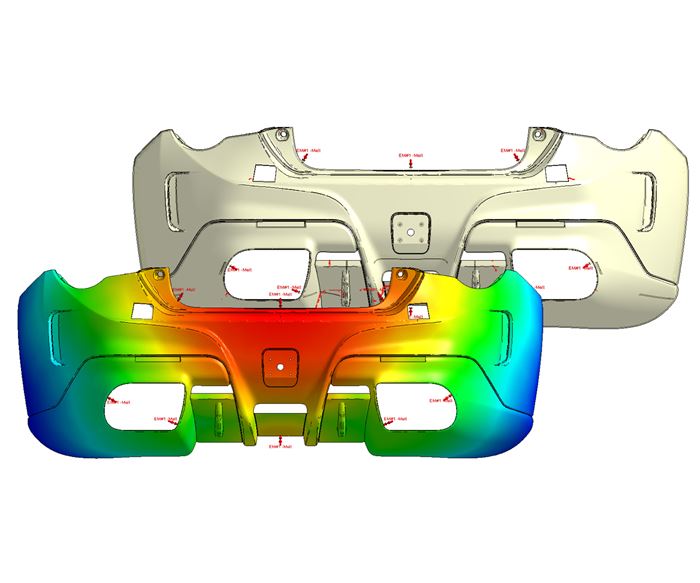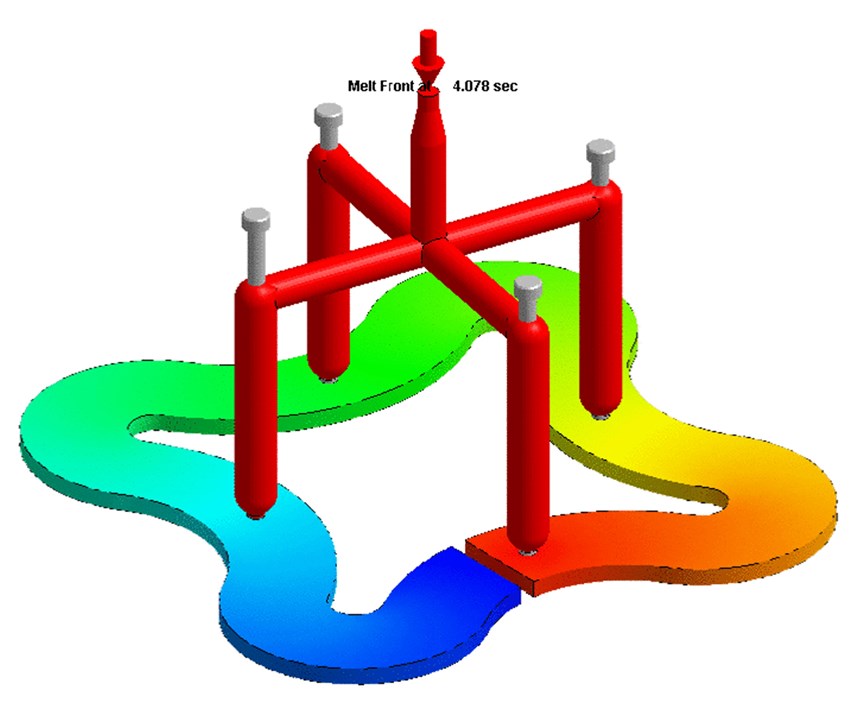Faster Mold Simulation Arrives
Moldex 3D Version R16 offers dramatic improvements in speed plus greater simplicity and ease of use and new simulation capabilities.
A much faster and easier-to-use update of Moldex 3D plastics molding simulation software is available from CoreTech System Co., Ltd. of Taiwan. Among the good news for users is 20-30% faster filling and packing simulation. New Moldex 3D version R16 also includes a new analysis tool called Quick Flow, which allows users to quickly test multiple gating locations. This is said to “drastically” reduce the time to determine the best gating location, speeding up the design-to-analysis cycle by up to 15 times.
Version R16 also reportedly reduces the complexity of mold analysis. It extends previous capabilities for non-matching mesh generation to include mold inserts and mold plates, making it easier and simpler to simulate the entire mold by automatically generating solid meshes on non-matching faces. The new software also allows users to assign material properties to each individual mold component and to visualize the temperature variation over the parting plane to optimize cycle time. There’s also a powerful model-healing tool to automatically repair imported CAD geometry before generating the boundary-layer mesh. New visualization tools measure distance between points and display the value at a specific point. This makes it easier for users to compare and analyze results. And R16 frees users from repetitive manual tasks by automating the entire simulation workflow with users’ predefined parameters, removing human error to ensure simulation consistency.
Other new capabilities include coupling melt viscoelasticity to flow for more accurate predictions of warpage, optical properties, and flow-induced defects. Simulation of valve-pin movement in hot-runner valve gates takes into account pin position and velocity to help prevent flow marks and other cosmetic defects.
For composites, R16 has enhanced capabilities for resin transfer molding (RTM) analysis, including improved fiber-orientation prediction and warp analysis incorporating deformation of the fiber mat. Other enhancements include prediction of cell size and distribution in PUR chemical foam molding and improved prediction of charge deformation in compression molding.
Related Content
-
Know Your Options in Injection Machine Nozzles
Improvements in nozzle design in recent years overcome some of the limitations of previous filter, mixing, and shut-off nozzles.
-
What to Look for in High-Speed Automation for Pipette Production
Automation is a must-have for molders of pipettes. Make sure your supplier provides assurances of throughput and output, manpower utilization, floor space consumption and payback period.
-
Is There a More Accurate Means to Calculate Tonnage?
Molders have long used the projected area of the parts and runner to guesstimate how much tonnage is required to mold a part without flash, but there’s a more precise methodology.














